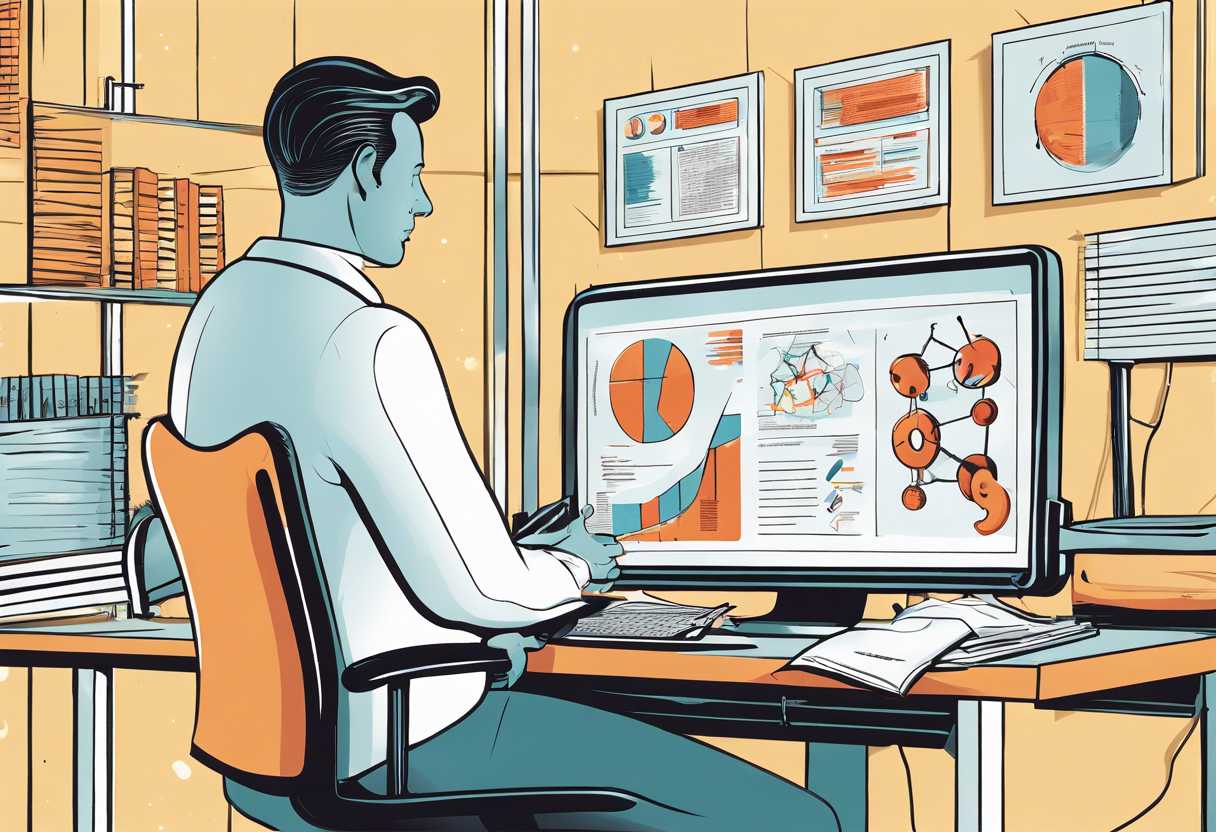Welcome to our comprehensive guide on how to monitor and review risk assessments. In today’s fast-paced and ever-changing business environment, it is crucial for organizations to regularly assess and mitigate potential risks. However, conducting a one-time risk assessment is not enough. It is equally important to continuously monitor and review the effectiveness of these assessments to ensure ongoing protection and resilience.
In this blog post, we will delve into the importance of regularly monitoring and reviewing risk assessments. We will also explore best practices for conducting ongoing risk assessment reviews, as well as key metrics and indicators to track in risk assessment monitoring. Additionally, we will discuss strategies for identifying and addressing potential risk assessment gaps, and how to leverage technology for efficient and effective risk assessment monitoring and review.
By the end of this post, you will have a clear understanding of the essential steps and considerations for effectively monitoring and reviewing risk assessments, enabling you to proactively manage and mitigate potential risks within your organization. So, let’s dive in and explore the best practices for ensuring the ongoing effectiveness of your risk assessment processes.
The Importance of Regularly Monitoring and Reviewing Risk Assessments
Ensuring Accuracy and Relevance
Regularly monitoring and reviewing risk assessments is crucial to ensure that they remain accurate and relevant. As businesses evolve and change, so do the potential risks they face. By regularly reviewing risk assessments, organizations can identify new risks that may have emerged and update their strategies accordingly. This proactive approach helps to minimize the likelihood of overlooking potential threats and vulnerabilities.
Compliance with Regulations and Standards
Many industries are subject to specific regulations and standards related to risk management. Regular monitoring and reviewing of risk assessments are essential to ensure compliance with these requirements. By staying up to date with regulatory changes and industry best practices, organizations can avoid potential penalties and legal issues. Additionally, maintaining compliance demonstrates a commitment to risk management and can enhance the organization’s reputation.
Improving Decision-Making and Resource Allocation
Regular monitoring and reviewing of risk assessments provide valuable insights that can inform decision-making and resource allocation. By understanding the current risk landscape, organizations can prioritize their efforts and resources to address the most critical risks. This targeted approach helps to optimize risk management strategies and maximize the effectiveness of risk mitigation measures. It also enables organizations to adapt quickly to changing circumstances and make informed decisions based on the most up-to-date information.

Best Practices for Conducting Ongoing Risk Assessment Reviews
Importance of Ongoing Risk Assessment Reviews
Regular risk assessment reviews are crucial for businesses to identify and mitigate potential risks that could impact their operations. By conducting ongoing reviews, organizations can stay ahead of emerging threats and ensure that their risk management strategies remain effective.
Key Components of Ongoing Risk Assessment Reviews
When conducting ongoing risk assessment reviews, it’s important to consider several key components:
- Identifying and prioritizing potential risks
- Assessing the likelihood and impact of each risk
- Reviewing existing risk mitigation measures
- Updating risk management strategies as needed
Utilizing Data in Ongoing Risk Assessment Reviews
Effective risk assessment reviews rely on accurate and up-to-date data. Organizations should leverage data analytics tools to gather and analyze relevant information, such as historical incident data, industry trends, and regulatory changes. By utilizing data, businesses can make informed decisions and proactively address potential risks.
| Risk Identification | Likelihood and Impact Assessment | Risk Mitigation Review | Strategy Update |
| 1. Identify potential risks across all areas of the business | 1. Assess the likelihood of each risk occurring and its potential impact | 1. Review existing risk mitigation measures for effectiveness | 1. Update risk management strategies based on assessment findings |
| 2. Prioritize risks based on their potential impact on the organization | 2. Determine the level of risk tolerance for each identified risk | 2. Identify any gaps in risk mitigation and develop action plans to address them | 2. Communicate strategy updates to relevant stakeholders and ensure implementation |

Key Metrics and Indicators to Track in Risk Assessment Monitoring
Incident Rate
One of the most important metrics to track in risk assessment monitoring is the incident rate. This metric measures the number of incidents or accidents that occur within a specific period of time. By tracking the incident rate, organizations can identify trends and patterns that may indicate areas of high risk or potential hazards. This information can then be used to implement targeted risk mitigation strategies and improve overall safety.
Compliance Rate
Another key indicator to monitor in risk assessment is the compliance rate. This metric measures the extent to which employees and stakeholders adhere to established safety protocols and regulations. A high compliance rate indicates that risk management measures are being effectively implemented and followed, while a low compliance rate may signal the need for additional training or enforcement of safety procedures.
Severity Rate
The severity rate is a crucial metric that measures the impact or severity of incidents that occur within an organization. By tracking the severity rate, organizations can gain insight into the potential consequences of risk events and prioritize mitigation efforts accordingly. This metric can help identify high-risk areas that require immediate attention and resources to prevent serious incidents from occurring.
| Metrics | Definition |
| Incident Rate | The number of incidents or accidents within a specific period of time |
| Compliance Rate | The extent to which employees and stakeholders adhere to safety protocols and regulations |
| Severity Rate | The impact or severity of incidents within an organization |
Strategies for Identifying and Addressing Potential Risk Assessment Gaps
Understanding the Importance of Risk Assessment
Risk assessment is a crucial process for any organization, as it helps in identifying potential risks and vulnerabilities that could impact the business. It involves evaluating the likelihood and impact of these risks and developing strategies to mitigate them. However, there are often gaps in the risk assessment process that need to be addressed to ensure comprehensive coverage.
Identifying Potential Risk Assessment Gaps
One of the first steps in addressing potential risk assessment gaps is to identify them. This can be done through a thorough review of the current risk assessment process, including the methodologies and tools used. It’s important to look for any areas that may be overlooked or not adequately covered, such as emerging risks, changes in the business environment, or gaps in data collection and analysis.
- Review current risk assessment methodologies and tools
- Identify areas that may be overlooked or not adequately covered
- Look for emerging risks and changes in the business environment
- Address gaps in data collection and analysis
Addressing Potential Risk Assessment Gaps
Once potential gaps have been identified, it’s important to develop strategies to address them. This may involve updating risk assessment methodologies, implementing new tools or technologies, or enhancing data collection and analysis processes. It’s also important to ensure that there is clear communication and collaboration among different departments and stakeholders involved in the risk assessment process.
- Update risk assessment methodologies
- Implement new tools or technologies
- Enhance data collection and analysis processes
- Ensure clear communication and collaboration among different departments and stakeholders
Leveraging Technology for Efficient and Effective Risk Assessment Monitoring and Review
Streamlining Data Collection and Analysis
One of the key benefits of leveraging technology for risk assessment monitoring and review is the ability to streamline data collection and analysis. With the use of advanced software and tools, organizations can gather and process large volumes of data in a fraction of the time it would take using manual methods. This not only saves time and resources but also allows for more comprehensive and accurate risk assessments.
By utilizing technology, organizations can also automate the process of data collection, reducing the likelihood of human error and ensuring that all relevant information is captured and analyzed. This can lead to more informed decision-making and a more proactive approach to risk management.
Real-time Monitoring and Reporting
Another advantage of leveraging technology for risk assessment monitoring and review is the ability to conduct real-time monitoring and reporting. Advanced software and tools can provide organizations with up-to-date information on potential risks and threats, allowing for immediate action to be taken when necessary.
Real-time reporting also enables organizations to track and analyze trends over time, identifying patterns and potential areas of concern. This can help to inform future risk assessments and ensure that organizations are continually adapting to new and emerging risks.
Integration with Other Systems and Processes
Technology can also facilitate the integration of risk assessment monitoring and review with other systems and processes within an organization. By connecting risk management software with other business systems, organizations can ensure that risk assessments are aligned with broader strategic objectives and are integrated into day-to-day operations.
This integration can also enable organizations to leverage data from other sources, such as financial or operational systems, to enhance the accuracy and comprehensiveness of risk assessments. By breaking down silos and fostering collaboration across different departments, organizations can gain a more holistic view of potential risks and develop more effective risk management strategies.
Conclusion
Regularly monitoring and reviewing risk assessments is crucial for maintaining a proactive approach to risk management. By following best practices and tracking key metrics, organizations can identify potential gaps and address them effectively. Leveraging technology can streamline the process and ensure efficient and accurate risk assessment monitoring and review.
As you continue to prioritize risk assessment monitoring and review, remember to stay updated on industry best practices and regulatory requirements. By doing so, you can proactively identify and address potential risks, ultimately safeguarding your organization’s success and reputation.
Take the time to assess your current risk assessment monitoring and review processes and consider implementing the strategies discussed in this blog post. By doing so, you can enhance your risk management efforts and ensure that your organization is well-prepared to navigate potential challenges.
Remember, effective risk assessment monitoring and review is an ongoing process that requires dedication and attention to detail. By incorporating the insights shared in this post, you can strengthen your risk management practices and contribute to the long-term success of your organization.
Thank you for reading, and we encourage you to take proactive steps to enhance your risk assessment monitoring and review processes. If you have any questions or would like to learn more about optimizing your risk management efforts, feel free to reach out to our team for personalized guidance.

